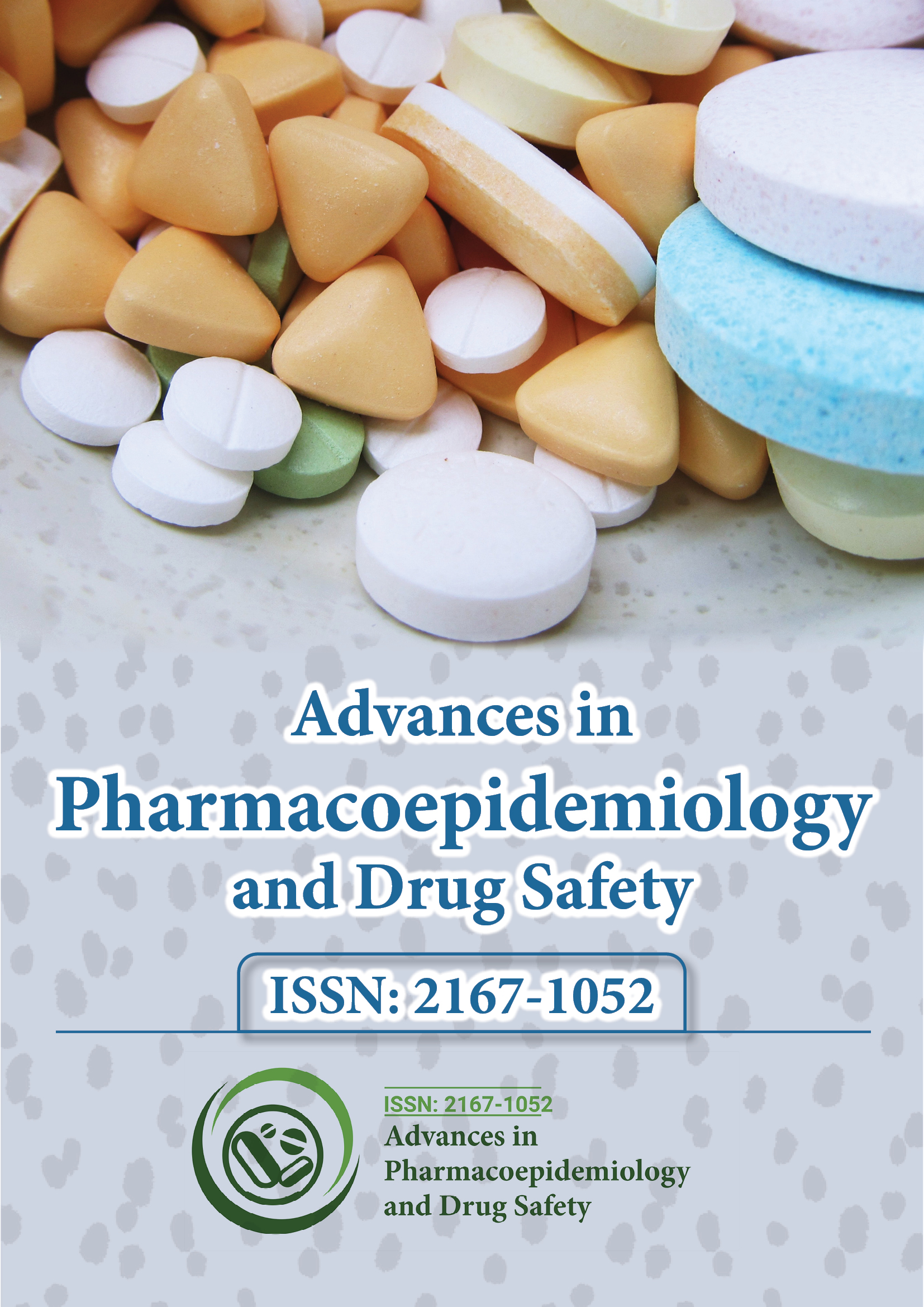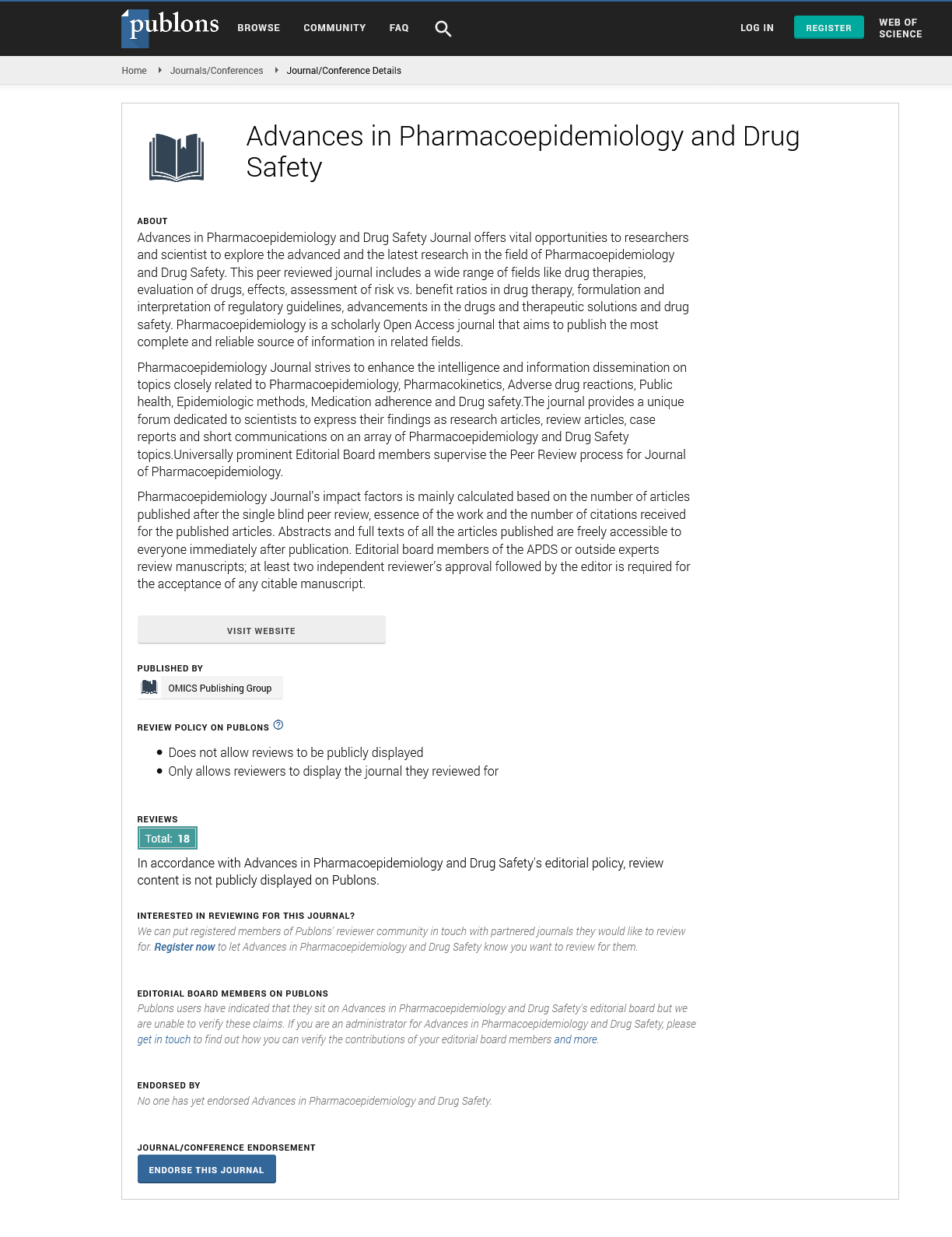Indexed In
- Open J Gate
- Genamics JournalSeek
- Academic Keys
- JournalTOCs
- RefSeek
- Hamdard University
- EBSCO A-Z
- SWB online catalog
- Publons
- Geneva Foundation for Medical Education and Research
- Euro Pub
- Google Scholar
Useful Links
Share This Page
Journal Flyer

Open Access Journals
- Agri and Aquaculture
- Biochemistry
- Bioinformatics & Systems Biology
- Business & Management
- Chemistry
- Clinical Sciences
- Engineering
- Food & Nutrition
- General Science
- Genetics & Molecular Biology
- Immunology & Microbiology
- Medical Sciences
- Neuroscience & Psychology
- Nursing & Health Care
- Pharmaceutical Sciences
Perspective - (2024) Volume 13, Issue 4
Drug Safety Surveillance: Importance, Mechanisms and Strategies
Kenzo Yoshi*Received: 29-Nov-2024, Manuscript No. PDS-24-28234; Editor assigned: 02-Dec-2024, Pre QC No. PDS-24-28234 (PQ); Reviewed: 16-Dec-2024, QC No. PDS-24-28234; Revised: 23-Dec-2024, Manuscript No. PDS-24-28234 (R); Published: 30-Dec-2024, DOI: 10.35250/2167-1052.24.13.378
Description
Drug safety surveillance, also known as pharmacovigilance, is the process of monitoring the safety of pharmaceutical products after they have been approved for public use. This is an essential aspect of healthcare, as it helps detect, assess, understand and prevent adverse effects or any other drug-related problems that may arise post-marketing. Despite rigorous testing during clinical trials, sudden issues can arise once a drug is used by a larger, more varied population. Therefore, effective drug safety surveillance systems are essential to ensure that medications are used safely and that potential risks are minimized for patients.
Drug safety surveillance plays a pivotal role in protecting public health. While clinical trials provide valuable data about the efficacy and potential side effects of drugs, they often involve a relatively small sample of participants who may not fully represent the broader patient population. Once a drug is approved for public use, its effects need continuous monitoring to identify any long-term or rare adverse reactions that may not have been evident during the trial phases. Pharmacovigilance systems also allow for the identification of trends in drug safety, such as increasing reports of a specific side effect, which may indicate that a drug’s risk profile is more significant than initially thought. This ongoing monitoring can lead to the early identification of harmful effects and, when necessary, actions like drug recalls, amendments to prescribing information, or even the removal of a drug from the market.
Drug safety surveillance operates through multiple mechanisms, including spontaneous reporting systems, cohort studies, registries and signal detection processes. These methods allow healthcare professionals, regulatory authorities and pharmaceutical companies to detect, assess and manage drug related problems. The most common and widely used mechanism for drug safety surveillance is spontaneous reporting. In this system, healthcare professionals, patients and sometimes drug manufacturers voluntarily report adverse events or reactions to national or international regulatory bodies. These systems serve as the primary means of gathering real-world safety data. Registries are databases that collect information about patients who have been prescribed specific drugs or who have certain medical conditions. Signal detection refers to the process of identifying potential new risks associated with a drug based on the analysis of large amounts of safety data. The data from spontaneous reports, clinical studies and registries are analyzed using statistical methods to identify patterns that could suggest a causal relationship between a drug and an adverse event.
Once a potential safety issue is identified, regulatory authorities conduct a thorough risk assessment to evaluate the seriousness of the problem. This includes understanding the nature of the adverse event, the frequency of its occurrence and the population at risk. Risk management strategies are then developed, which may include issuing safety warnings, updating labeling, restricting the use of the drug, or even withdrawing the drug from the market if necessary. Effective drug safety surveillance relies on several important strategies. These strategies aim to improve the detection, understanding and minimization of drug-related risks while ensuring that the benefits of medications outweigh the risks. After a drug is approved for use, phase IV trials are conducted to monitor the drug's safety in the general population. These trials provide valuable information on the long-term effects of a drug, its use in different populations and the potential for rare or severe adverse reactions.
Clear and effective communication is an essential part of drug safety surveillance. Regulatory authorities, healthcare professionals and pharmaceutical companies must work together to inform patients and the public about the potential risks associated with certain drugs. This communication often takes the form of warnings, safety alerts, or changes in drug labeling. In some cases, black box warnings (the most serious type of warning) may be added to highlight significant risks.
In conclusion, assessing the risks and benefits of a drug can be difficult, especially when the drug’s therapeutic benefits outweigh the potential risks for most patients. Decisions about whether to restrict or withdraw a drug from the market often require a certain and balanced consideration of the available evidence, which can be challenging in the face of uncertainty. Drug safety surveillance is a significant component of the healthcare system, ensuring that medications are safe and effective for public use. By using various mechanisms such as spontaneous reporting, cohort studies and signal detection, health authorities and pharmaceutical companies can identify and manage potential drug related risks.
Citation: Yoshi K (2024). Drug Safety Surveillance: Importance, Mechanisms and Strategies. Adv Pharmacoepidemiol Drug Saf. 13:378.
Copyright: © 2024 Yoshi K. This is an open access article distributed under the terms of the Creative Commons Attribution License, which permits unrestricted use, distribution, and reproduction in any medium, provided the original author and source are credited.

